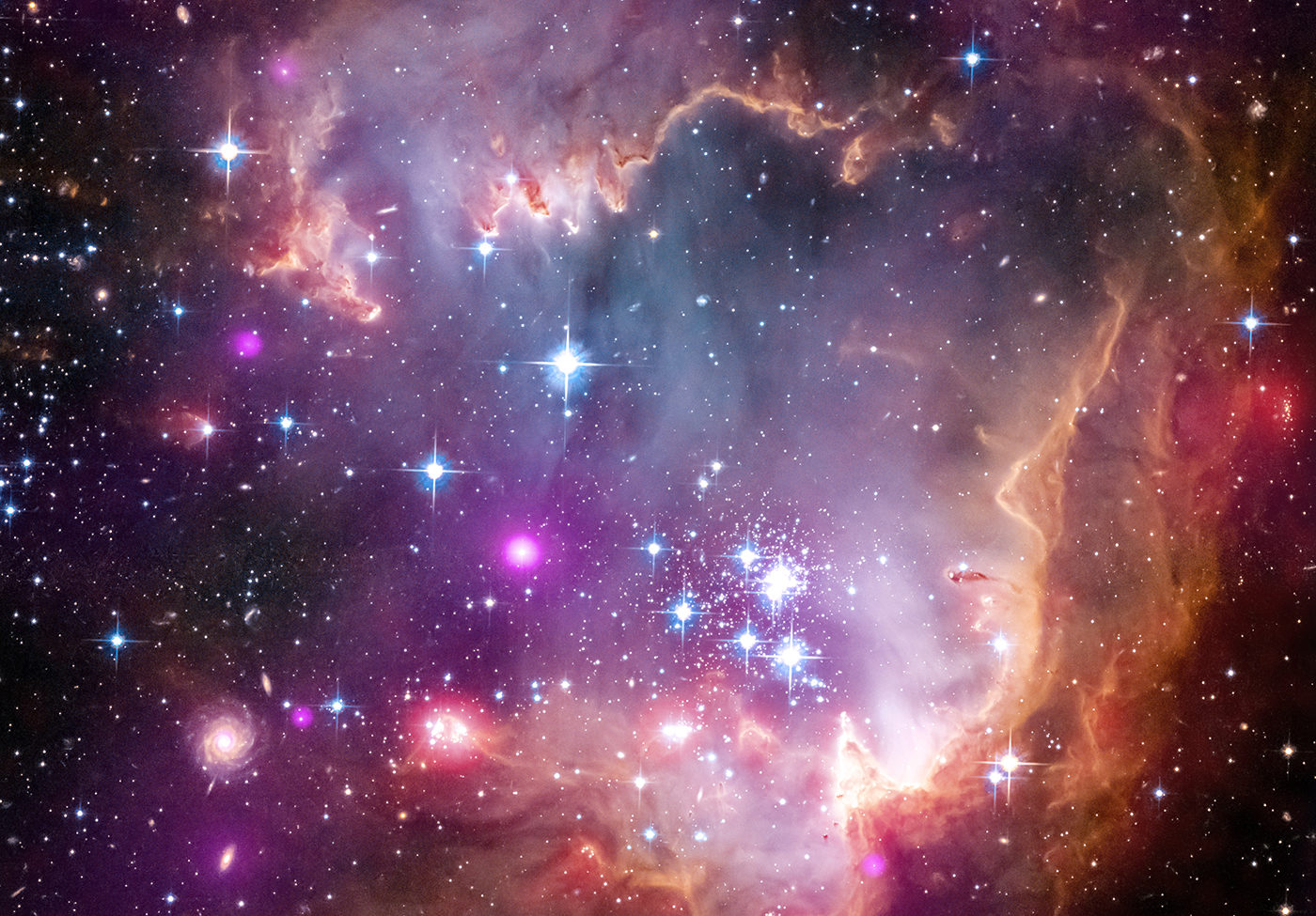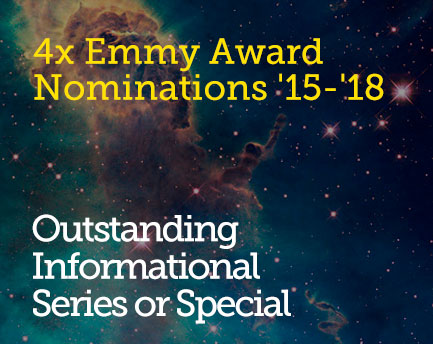April 4, 2019 8:00 pm
Friday, Explore the X-ray Universe with Neil deGrasse Tyson, Kimberly Arcand, and Chuck Nice
Did you know humans are practically blind? Well, at least when it comes to looking at things in the full electromagnetic spectrum. A good analogy used in this episode involves listening to Beethoven. Imagine only being able to listen to Beethoven’s Ninth Symphony rendered in just three notes. That amount is about how much the naked human eye can see on the electromagnetic scale.
On this episode of StarTalk Radio, we try and widen our horizons as first-time StarTalk guest Kimberly Arcand, Visualization and Emerging Technology Lead for NASA’s Chandra X-ray Observatory, sits down with Neil deGrasse Tyson and comic co-host Chuck Nice to answer fan-submitted questions on the X-ray universe.

Shown: The tip of the “wing” of the Small Magellanic Cloud galaxy, with NGC 602 near the tip. X-rays from NASA’s Chandra X-ray Observatory are shown in purple; visible-light from NASA’s Hubble Space Telescope is colored red, green and blue; and infrared observations from NASA’s Spitzer Space Telescope are also represented in red. Credit: X-ray: NASA/CXC/Univ. Potsdam/L. Oskinova, et al.; Optical: NASA/STScI; Infrared: NASA/JPL-Caltech.
Discover more about the Chandra X-ray Observatory as it prepares for its 20th anniversary from launch. Find out how much “more” we can see with Chandra than we can see with the human eye. Learn why different kinds of light are each a tool in the toolbox of astronomy. Explore the differences between Chandra and the James Webb Space Telescope. Neil also shares a history lesson on the naming process behind telescopes and observatories.
You’ll hear about the evolution of X-ray imaging. We ponder in which light spectrum we will be observing the universe next. We discuss the problem of trying to detect something that’s bigger than our current technological reach and intellectual understanding of the universe. We also ponder whether or not there will ever be something like the Stellar Cartography room in Star Trek.
Kim tells us how she converts X-ray data from Chandra into beautiful visual imagery. She also tells us about the many different ways to interpret Chandra’s data besides visually. Lastly, Neil tells us a story about Riccardo Giacconi, the father of X-ray astronomy and how his work impacts our daily security.
Please join us tomorrow night for Cosmic Queries – X-ray Astrophysics at 7pm ET right here on our website, as well as on Apple Podcasts, Google Play Music, SoundCloud, Spotify, Stitcher, and TuneIn. If you’re an All-Access subscriber, you can watch or listen to this episode ad-free at 7pm, too.
That’s it for now. Keep Looking Up!
-Ian Mullen
Get the most out of StarTalk!
Ad-Free Audio Downloads
Ad-Free Video Episodes
Stickers & Mugs
Live Streams with Neil
Priority Cosmic Queries
Early-Access Videos
Learn the Meaning of Life
...and much more

 Become a Patron
Become a Patron

